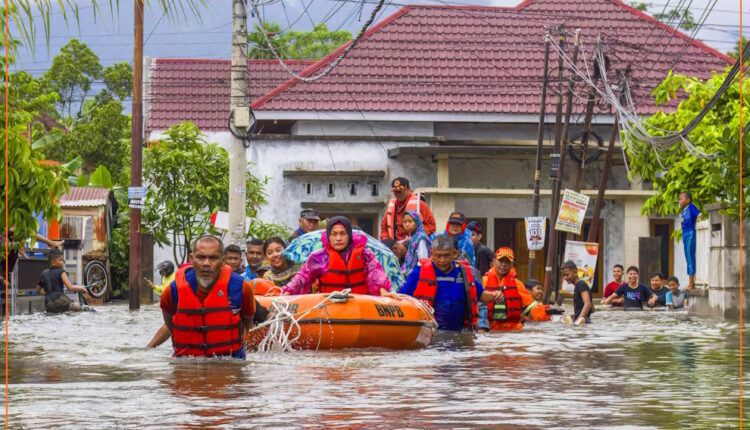JAKARTA, Indonesia – A series of devastating floods and landslides, fueled by a powerful tropical storm system and relentless monsoon rains, has claimed hundreds of lives across Southeast Asia, with Indonesia bearing the brunt of the catastrophe.
Indonesia’s Rising Toll and Desperate Search
In Indonesia, the national death toll has soared to 174, with officials warning the number could rise significantly as search operations continue. The worst-hit island of Sumatra has been carved apart by raging floodwaters and mudslides, with 79 individuals still reported missing.
National Disaster Mitigation Agency (BNPB) chief Suharyanto provided a grim provincial breakdown on Friday: 116 deaths in North Sumatra, 35 in Aceh, and 23 in West Sumatra. “While the rain had stopped, 79 people are still missing and thousands of families have been displaced from their homes,” he stated, underscoring the scale of the humanitarian crisis.
The challenges for rescuers remain immense. In the Padang Pariaman region of West Sumatra, where 22 people died, entire communities were submerged under at least one meter (3.3 feet) of water, and many areas were still inaccessible to search and rescue teams days after the disaster.
The human tragedy was starkly illustrated in the northern Sumatran town of Batang Toru, where residents buried seven unclaimed, decomposing victims in a mass grave. The bodies, wrapped in black plastic, were laid to rest as onlookers, their noses covered against the smell, looked on—a somber testament to the storm’s indiscriminate fury.
A Terrifying Ordeal for Survivors
For those who lived, the memories are harrowing. Misniati, 53, from West Sumatra, described a frantic battle against the rising waters as she tried to reach her husband after early morning prayers.
“I noticed the street was flooded. I tried to run back to my house… and the water was already reaching my waist,” she told the AFP news agency. “By the time I reached home, it was up to my chest.”
Authorities are now racing against time to restore critical infrastructure. Abdul Muhari, a BNPB spokesman, confirmed that communications are still down in some areas, while teams work to clear roads blocked by landslide debris and restore power. The government has committed to continuing the airlift of aid and rescue personnel into the most stricken zones.
A Regional Crisis Unfolds
The destructive weather system has not been confined to Indonesia, creating a regional crisis that has stretched government resources.
-
Thailand: The Thai government reported 145 fatalities from floods that have inundated eight southern provinces, affecting more than 3.5 million people. In the hardest-hit city of Hat Yai, the rains have ceased, but residents wade through ankle-deep water to assess the damage to their homes and businesses, many of which remain without electricity.
-
Malaysia: While the tropical storm “Senyar” has weakened since making landfall, meteorological authorities are bracing for more heavy rain and rough seas. Two deaths have been confirmed, and while the number of evacuees in shelters has dropped to 30,000, a major rescue operation is underway. Malaysia’s Ministry of Foreign Affairs announced it has evacuated 1,459 of its citizens who were stranded in flood-hit hotels in Thailand, with efforts continuing to rescue approximately 300 more.
-
Sri Lanka: Separately, the South Asian island nation has also been struck by tragedy, with authorities confirming at least 56 people were killed by a cyclone that battered the country.
A Vulnerable Region
The disaster highlights the acute vulnerability of Southeast Asia to extreme weather events. The region’s intense monsoon season, often amplified by climate phenomena and tropical storms, regularly leads to flooding. However, environmentalists and disaster experts frequently point to deforestation, land degradation, and inadequate urban planning in flood-prone areas as factors that significantly exacerbate the damage and loss of life. As the immediate rescue efforts continue, the scale of the devastation is prompting urgent questions about resilience and preparedness in one of the world’s most disaster-prone regions.
Support Dawat Media Center
If there were ever a time to join us, it is now. Every contribution, however big or small, powers our journalism and sustains our future. Support the Dawat Media Center from as little as $/€10 – it only takes a minute. If you can, please consider supporting us with a regular amount each month. Thank you
DNB Bank AC # 0530 2294668
Account for international payments: NO15 0530 2294 668
Vipps: #557320



Comments are closed.